Skillet Shrimp with Leeks and Beans Recipe, Spotlight on Shrimp Stock and Slotted Spoon Skimmers, Weather and Chronic Pain, Plus Benefits of Chair Yoga
Delicious meals don’t require a complex or lengthy prep. This stovetop dish comes together in mere minutes and is a meal in itself, no sides necessary. This edition of the newsletter reports on the helpful findings of two studies—one on using weather forecasts to help you manage painful conditions and the other on the benefits of chair yoga for when some of those conditions make it hard to practice the traditional discipline.
Skillet Shrimp with Leeks and Beans
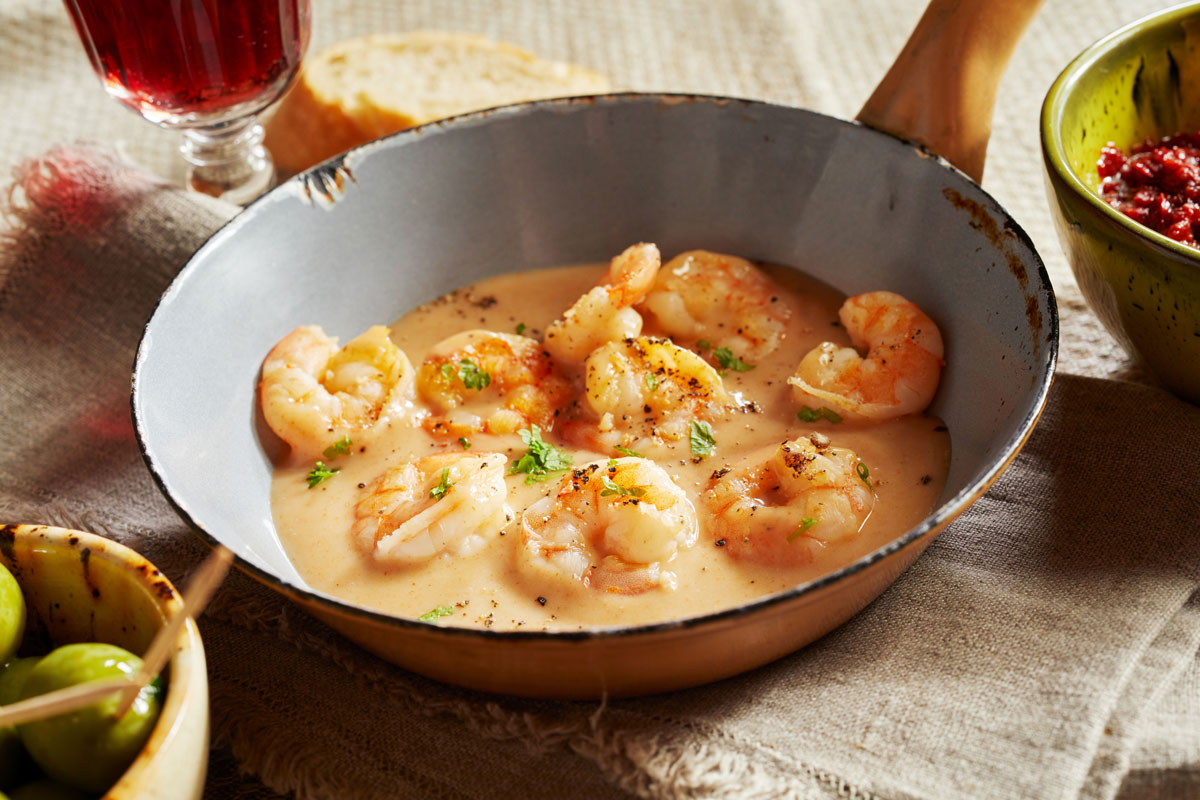 Skillet Shrimp with Leeks and Beans
Skillet Shrimp with Leeks and BeansThis dish uses two of the more delicate members of the allium family—leeks and chives—to add oniony taste without overpowering the shrimp. If you want more zest, be generous with the red pepper flakes.
Ingredients
- 1-1/2 pounds shrimp (18-20 count), peeled
- 1 teaspoon sweet paprika
- 1-1/2 teaspoons coarse sea salt, divided
- 1 teaspoon freshly ground black pepper
- 4 tablespoons extra virgin olive oil, divided use
- 2 large leeks, trimmed, cut into 1/4-inch-thick discs, and rinsed if sandy
- 1/2 cup white wine or shrimp stock
- 2 cups cooked cannellini beans (if canned, rinsed and drained)
- Juice and zest of a medium lemon
- Optional: crushed red pepper flakes, to taste
- 2 tablespoons unsalted butter
- 2 tablespoons fresh minced chives
Directions
Step 1
Toss the shrimp with the paprika, 1 teaspoon salt, and black pepper; set aside.
Step 2
Heat a large cast-iron skillet or frying pan. When hot, add 3 tablespoons olive oil and the leeks; sprinkle them with the remaining 1/2 teaspoon of salt to sweat them. Cook over low heat until they soften. Once tender, push them to the sides, add the last tablespoon of oil to the center of the pan, then add shrimp in one layer to sear. When the undersides turn opaque, after 2-3 minutes, use tongs to flip them and cook 2 more minutes.
Step 3
Deglaze the pan with the wine or stock. Add the beans, lemon juice and zest, and red pepper flakes, if using; stir well. Add the butter and stir it into the sauce as it melts. Top with the chives and serve.
Yields 4 servings

Healthy Ingredient Spotlight
Shrimp Stock
Don’t let your shrimp shells go to waste! Use them to make your own shrimp stock, perfect for this recipe and any seafood recipe that calls for clam juice or vegetable stock. Heat a stockpot over medium high heat. When hot, add 3 tablespoons extra virgin olive oil and a dice of 1 carrot, 2 celery stalks, and 1 small onion, along with 1 teaspoon salt; sauté until soft. Add the shrimp shells and sauté for 5 minutes. Add 2 cups of water and simmer for 30 minutes on low heat. Let cool, then pass through a strainer placed over a bowl. Press down on the shells with a potato masher to get out all the liquid. If not using right away (or within a few days), when completely cool, transfer the stock to a freezer-safe container, label it, and freeze until needed.

Quick Kitchen Nugget
Slotted Spoon Skimmer
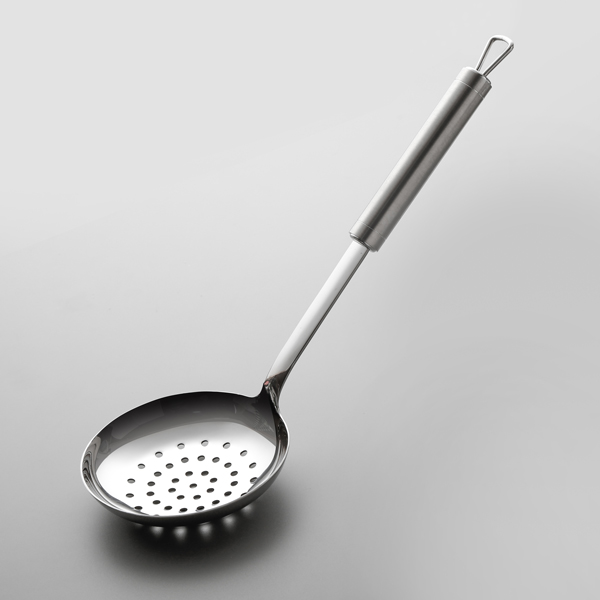
Sometimes called a slotted spoon colander or strainer, this is a great tool for scooping foods out of a pan if you need to cook another ingredient and for transferring food from one pan to another, such as when adding pasta to a sauce—you won’t have to lug the pasta pot to the sink to strain it. With a longer handle than a simple slotted spoon, your hand stays clear of boiling water or hot oil.

For Your Best Health
When Weather Worsens Chronic Pain
Do you have an achy joint that screams out when rain is coming? Changes in weather can often prompt an arthritis flare or a migraine in people with these conditions, though not everyone feels the warning signs far enough in advance to adjust their plans. On the horizon could be a tool to help: a weather-based pain forecast.
A research survey done at the University of Georgia found that about 70% of the more than 4,600 respondents would alter their behavior if they knew weather that triggered their pain was in the forecast. Among migraine sufferers, 89% identified weather as something that impacts their pain level, and 79% saw weather as a trigger for pain. Among individuals with other conditions, 64% said weather patterns could trigger pain, and 94% identified weather as a factor that impacts pain.
Lead author and geography/atmospheric sciences lecturer Christopher Elcik, PhD, built on previous research into specific weather patterns and pain-related conditions to gauge public interest in a weather-based pain forecast, which could indicate high or moderate risk for migraines or chronic pain.
“I see how much people can be affected by these types of pain, so if I can provide someone with insight into the level of risk for a day, maybe people can take steps to prevent the pain from happening,” Dr. Elcik said.
If the hypothetical risk was high, more than half of respondents said they were likely to take preventive measures, such as taking medication, resting, or avoiding compounding triggers, and about 47% of respondents with migraines and 46% with pain-related conditions were extremely likely to take such measures.
Desire for the forecasting tool itself was quite high, Dr. Elcik said, with 72% of those living with migraine and 66% with pain-related conditions saying they would alter their behavior by canceling plans or taking preventive measures in response to a weather-based pain forecast.
The likelihood of someone continuing with their plans also depended on the length of the activity. If plans were about 30 minutes long, 57% of respondents with migraines and 52% with pain-related conditions said they were extremely likely to continue plans despite a moderate risk of pain, and about 43% from each group would continue with a highest risk forecast. With an activity lasting more than three hours, however, that number dropped to around 23% for moderate risk and 18% for high risk with migraines, and 21% and 23% respectively for other pain-related conditions. “Everyone was more likely to cancel plans if the forecast risk was higher,” said Dr. Elcik.
Some respondents reported already using web-based tools, such as AccuWeather’s arthritis or migraine forecast, which predicts low-to-high risk according to atmospheric conditions. With existing tools, however, there is little available information about the variables considered or how the predictions are made.
While additional research is needed to create a reliable pain-based weather forecast, Dr. Elcik said this study highlights the importance of developing such a resource. “This publication shows there’s an audience that’s willing and eager to try something new, and there are probably many more people who would benefit—more than we even thought,” he said. “I think these results can push other researchers to also look at similar, larger-scale weather phenomena and help the community better understand how the atmosphere does impact pain.”

Fitness Flash
The Value of Chair Yoga
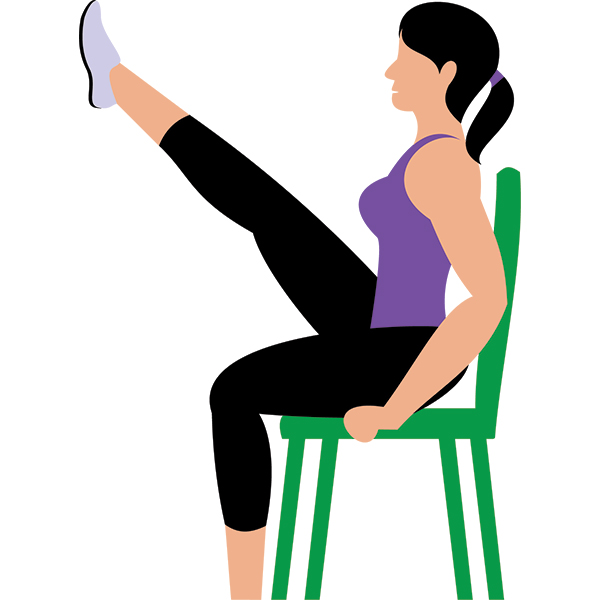
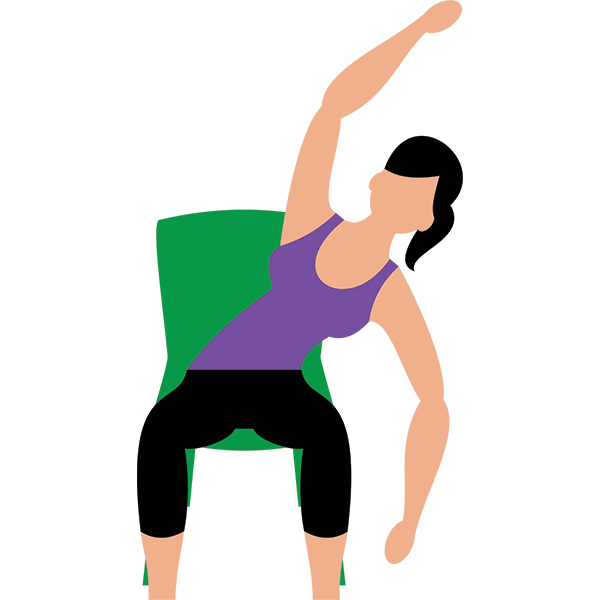
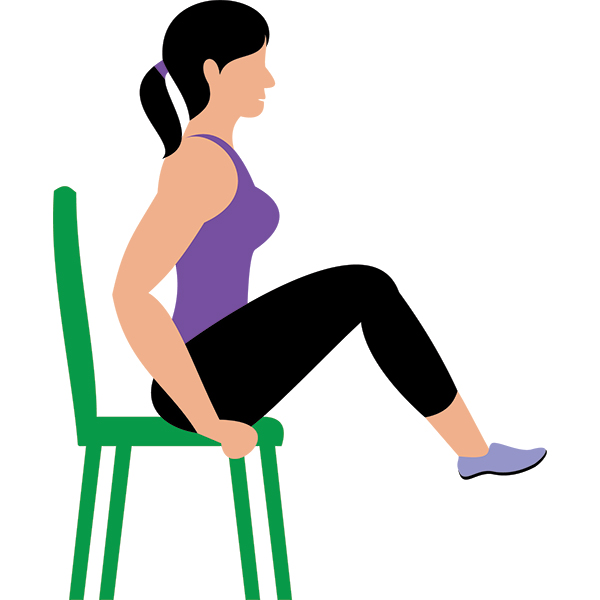
Since the guideline from exercise experts is to get up and get moving, you might question whether the popularity of chair yoga is warranted. For many, the answer is yes, according to a study published in 2023 in the journal Healthcare. It looked at the effectiveness of chair yoga to improve functioning and daily life activity scores in women with knee osteoarthritis. After following a chair yoga exercise program for 12 weeks, participants experienced changes in physical functional ability and even BMI.
Chair yoga adapts traditional yoga poses so they can be performed while sitting in a chair instead of on a mat or standing, making it accessible for people who have a hard time getting up and down from the floor or balancing in a standing position or who want a gentle introduction to the practice. And you’ll still gain many of its benefits‚ like better flexibility, increased strength, less pain, less stress, and a better mood, according to the research.
How to get started? There are classes you can take in person, or you can follow along with a video or an app, most of which offer routines from beginner to advanced.
Get More Recipes In Your Inbox!